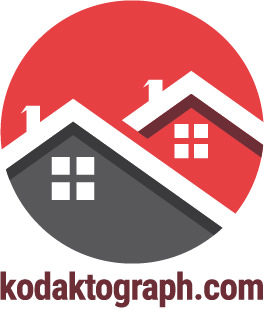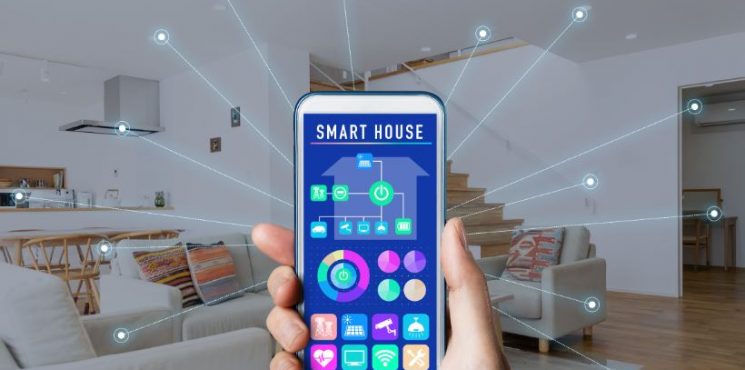If you are considering incorporating a smart home automation system into your daily home life, it will help you understand its basics.
After all, we’re in the golden age of technology – why not take advantage of it?
You probably already know someone who swears by the added convenience, comfort, and security of smart home automation.
Smart Home Automation 101
This home technology refers to suites of devices, systems, and home appliances that are integrated into one network. This sole network can control the connected systems, devices, and appliances either remotely or independently.
When you have a suite of smart home devices and appliances integrated with one system, it’s also referred to as a “smart home” or a “connected home.”
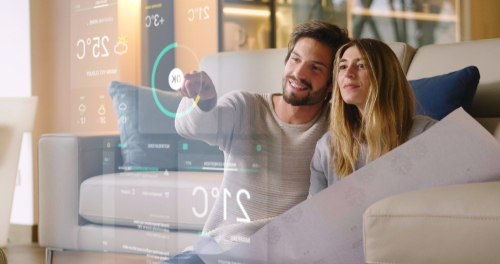
For example, if your smartphone or other mobile devices control your house’s lights, security system, thermostat, or entertainment system, or other devices, then you have a connected home.
This home technology allows you to take advantage of comfort, convenience, and high-tech functionality – all these things were not possible in the past.
As advancements in home functionalities continue to grow, so will the opportunities for homeowners and consumers to tap into smart home automation functions.
3 Primary Aspects of Smart Home Automation
There are three distinct levels of smart home automation.
- Monitoring
Monitoring is the capability to view and check the status of the smart home system. What’s the indoor temperature? Is the garage door locked? Is the security camera by the door working?
- Control
Control is the ability to change or update the status of the system. Turn the bedroom lights on or off. Lock the front door. Turn down the heating.
- Automation
This is the feature where you can automatically alter the system’s status in accordance with a specific event or activity. Some instances of this feature include turning the lights on when people get home, turning them off when no one is home, adjusting the thermostat depending on the outside temperature, etc.
Major Advantages of a Smart Home Automation System
To some, having a smart home is a way to show off and brag about it. They go into it without thoroughly evaluating the specific needs they have for their home.
While a smart home automation system is a nifty way to add comfort, convenience, and security to your home, you need to make sure that you know what you’re getting them for.
The great thing about a smart home system is you can fully customize it based on your family and your lifestyle’s needs. By knowing what your needs are, you can take full advantage of your smart home automation system.
Here are the fundamental and primary advantages of integrating a smart home system into your house and daily living. You can tweak these benefits to meet your specific needs.
Manage All Your Devices and Appliances from One Source
Having one place to control all your devices is a major advantage. When you can conveniently keep all your home technology integrated into one interface is a huge step forward for home management.
In theory, all you have to do is install one mobile app and use it from your smartphone or tablet to manage all your devices. This feature allows you to tap into the numerous settings, functions, and devices you use throughout your house.
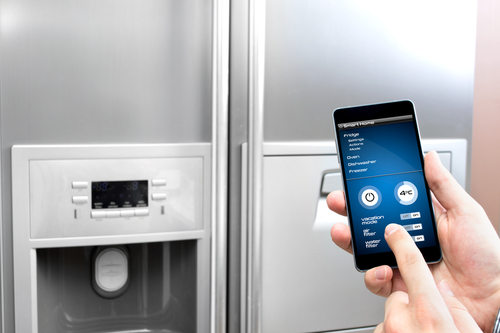
Having one place and source to manage all your home technologies also reduces the learning curve for new users or those who are not technologically literate. All this makes it more convenient to access the functionalities you specifically want for your home life.
Flexibility for All Devices
Smart home automation systems are made to integrate with other appliances, devices, and technologies easily. Technology is ever-evolving. This means that even though you got the most state-of-the-art device today, there will be newer models in the next month or year.
The flexibility of smart home systems allows homeowners to include new devices into their own systems easily.
Beyond that, you will most likely keep adding to your suite of appliances as you replace the older and outdated ones with newcomers.
Seamlessly integrating your new devices will make upgrading to more recent and more impressive home automation appliances easier – allowing you to continue enjoying your smart home and reaping its benefits.
Maximize Residential Security Features
Today’s modern homeowners prioritize home security features. Incorporating home security systems into your existing smart home network can elevate their property security efforts.
When it comes to smart home security functions, homeowners have plenty of options. This feature allows you to fully customize your home security efforts based on your specific needs.
For instance, your home automation system can be linked to surveillance cameras, automated door and window locks, motion detectors, and other home security devices.
You can activate or deactivate these devices from your mobile phone even when you are outside the house.
On top of that, you can set the system to send you security alerts and notifications when an event is detected. These monitoring functions are all in real-time. You can receive security notifications and alerts no matter where you are or what time of the day it is.
Remote Control of Smart Home Automation System
One of the main characteristics of smart home automation is remote control, monitoring, and access. Before, only a limited number of one-way remote monitoring and control was possible.
However, with the rise of tablets and smartphones, we can now access our home network wherever we are on the globe through Wi-Fi.
With a compatible home automation system, you can access, monitor, and control your system using any Wi-Fi-enabled device.
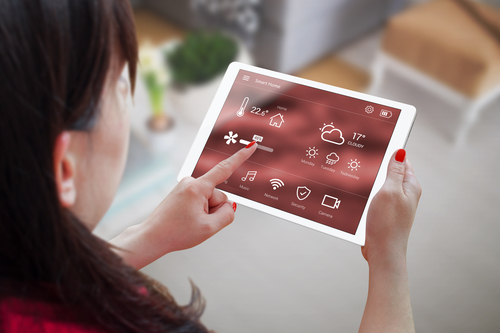
This feature lets you in on a wealth of information about your home’s detailed status at any point in time the system has been functioning.
You can check your thermostat, your home security system, whether the doors are locked, whether the lights are off, and so much more.
When you have a surveillance system integrated into your home automation and home security network, you can also retrieve real-time footage to see what’s happening on your property, no matter where you are.
Improved Energy-Efficiency Efforts
Modern home automation systems are engineered with energy efficiency in mind. For example, many smart thermostats can detect outside temperatures and set indoor settings in accordance with them.
You can also set your smart thermostat to learn your set temperature preferences and daily schedules. From these settings, smart thermostats can suggest the best energy-efficient settings that meet you’re the needs of your lifestyle.
The same can be said about motorized shades and automated lighting systems. These smart devices can be programmed to activate specific settings based on what time of the day it is. For example, you can have the lights turn off automatically when the sun rises or when you leave the room.
These functions allow you not to waste any energy and conserve power.
Enhanced Functionality of Home Appliances
Innovations in home technologies are changing the way we use everyday appliances. Refrigerators, ovens, washers and dryers, televisions, and more – these smart appliances offer user-friendly functionalities, conveniences, and comfort in our daily lives.
Smart appliances have the feature to alert you when there is a malfunction or problem. Normal household appliances don’t do this. Typically, you wouldn’t know there is an issue until it has greatly intensified.
With many household appliances, the sooner you detect a problem, the easier it will be to fix it. This ability will save you from future complications if the issue goes unnoticed.
A smart home automation system elevates the functionality of your home appliances. For instance, a smart TV allows you to integrate your television with better apps for enhanced programming. You can also access, control, and monitor your smart appliances remotely.
Even if you have forgotten to turn off the oven or shut the fridge door, you can rest easy knowing that you can set everything right from afar using the corresponding smart appliance app from your mobile device.
On top of all this, smart appliances are crafted to give the best energy-saving features. While the upfront cost of switching to smart devices is higher than purchasing the traditional counterpart, the savings you get down the line will pay off.
Smart appliances can also give you detailed feedback on your energy consumption. These feedbacks and status reports will show you any issues that may be negatively affecting your energy-efficiency efforts.
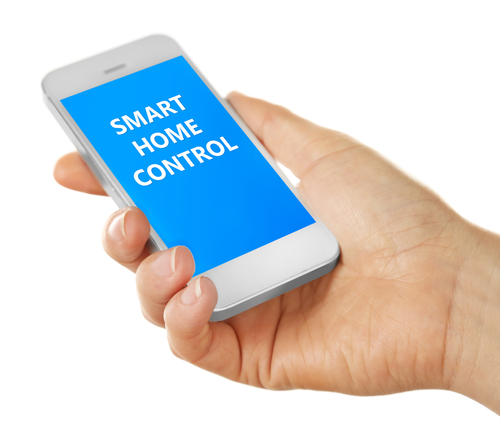
Based on these status reports, smart appliances can provide the best-recommended settings that will give you the best energy conservation measures.
For instance, your smart washer and dryer can send you a notification if you need to empty the lint trap. Your smart fridge can send you an alert if you need to adjust the internal temperature.
Your smart appliances can suggest the best power settings based on specific times throughout the day. You can receive notifications to not turn your smart devices on or if they can be in power-saving mode.
All these settings ultimately maximize the overall energy efficiency in your home.
On top of that, all smart appliances are linked through Wi-Fi or the internet. This feature means that your smart devices can “communicate” with each other for the best functions and settings.
With smart appliances integrated with your smart home automation system, the stress of doing household chores can be gone.
